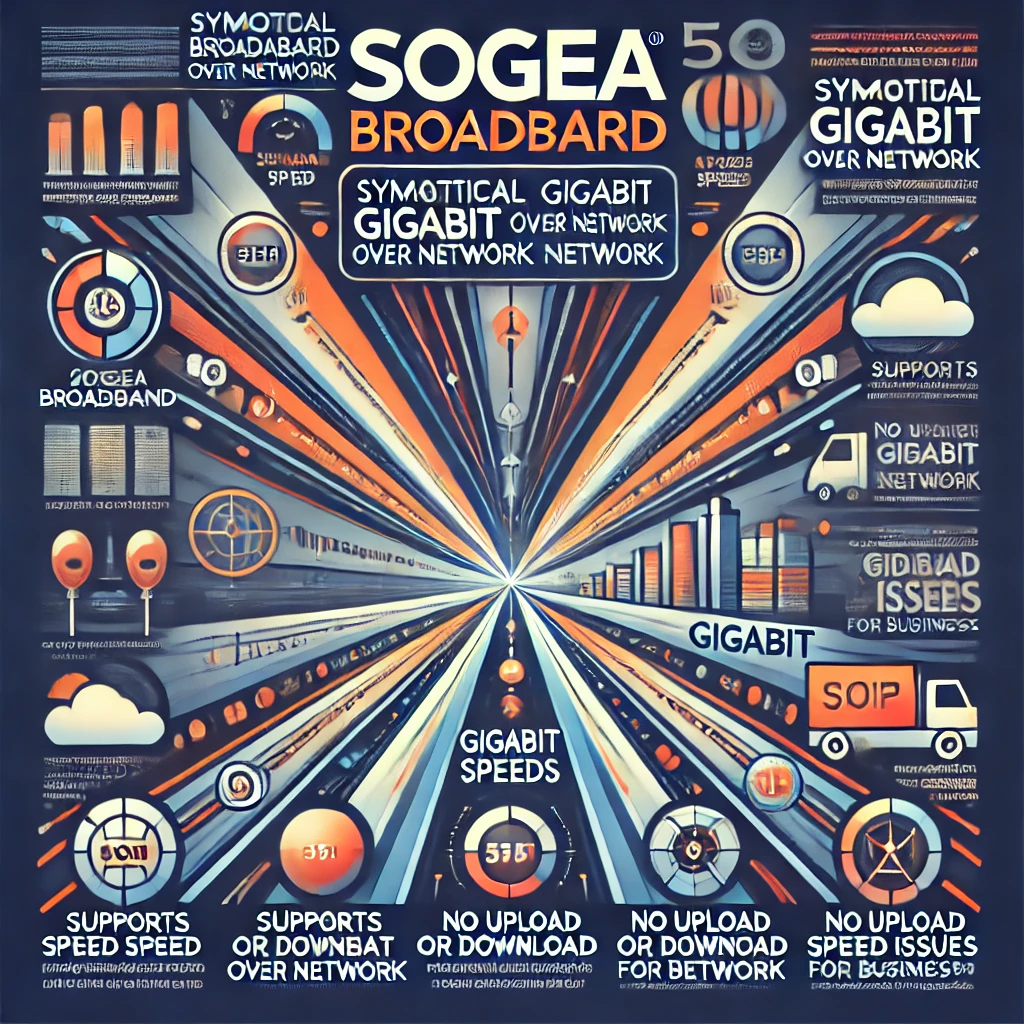In today’s fast-paced digital landscape, staying ahead of the curve is paramount for small to medium enterprises (SMEs) aiming to thrive. With the advent of 4G and 5G technologies, businesses now have access to mobile networks offering unprecedented speeds and reliability. Compared to a decade ago, the coverage and capabilities of these networks have expanded significantly, providing SMEs with robust connectivity solutions that were once unimaginable. Moreover, the choice between external and indoor antennas can greatly impact the quality of your mobile network, with external options often enhancing signal strength and coverage.
Embracing the Power of 4G/5G
Evolution of Mobile Networks
Over the past decade, mobile networks have undergone a significant transformation. A decade ago, 3G was the standard, offering limited speeds and coverage. Today, 4G has become the backbone of mobile connectivity, providing much faster data transfer rates and wider coverage. Meanwhile, 5G is entering the scene, promising even greater speed and ultra-reliable connections. This evolution allows businesses to experience seamless video conferencing, cloud services, and real-time data analytics. The shift from 3G to 4G/5G has not only enhanced mobile network capabilities but also unlocked new opportunities for SMEs to innovate and grow with mobile solutions. As we continue to embrace these technologies, businesses can expect improved efficiency, productivity, and customer engagement.
How Mobile Networks Work
Understanding how mobile networks operate provides valuable insight into leveraging 4G and 5G effectively for your business. These networks function by connecting mobile devices to the internet or other networks via a series of base stations, often referred to as cell towers.
Key Components of Mobile Networks
-
Base Stations: These are the cornerstones of mobile networks, responsible for transmitting and receiving signals from mobile devices. Base stations cover specific geographical areas known as cells, and the seamless transition between these cells allows uninterrupted mobile communication as users move.
-
Core Network: This part of the network manages data traffic, routing calls, and internet connections. It acts as the central hub, linking base stations to external networks, including the public internet and other mobile networks.
-
Mobile Devices: Smartphones, tablets, and other devices equipped with SIM cards connect to the closest base station, allowing access to network services like voice calls, messaging, and data transfer.
How Data Transmits
Data transmission in mobile networks occurs via radio frequencies. These frequencies are divided into channels, allowing multiple users to share the same bandwidth efficiently without interference. When a mobile device sends a request (like accessing a webpage), the signal travels from the device to the nearest base station. From there, it’s routed through the core network and onto the internet, which then sends the requested data back through the same path.
The Transition from 4G to 5G
While 4G networks primarily use existing radio frequency bands, 5G expands this spectrum to include higher frequencies. This expansion enables faster data speeds, increased capacity, and reduced latency, which are crucial for supporting modern applications like virtual reality and autonomous vehicles. Moreover, 5G introduces advanced technologies like beamforming and network slicing, which enhance efficiency and reliability.
By grasping the mechanics behind mobile networks, businesses can better appreciate the value of 4G and 5G solutions. This understanding helps in making informed decisions about network infrastructure investments, ultimately leading to improved business performance and customer satisfaction.
Why 4G/5G is Reliable Today
Today, 4G and 5G technologies stand as pillars of reliability for business connectivity. With extensive network infrastructure improvements, mobile networks now offer unparalleled coverage and stability. 4G provides robust speeds that handle most business needs efficiently, supporting data-intensive applications and mobile workforce demands. On the other hand, 5G takes reliability a step further with its ultra-low latency and high-capacity networks. This enables real-time communication and seamless IoT integration, crucial for modern businesses. Moreover, the ongoing rollout of 5G ensures that its benefits are becoming increasingly accessible, even in remote locations. By leveraging these advancements, SMEs can ensure uninterrupted operations, optimise remote work capabilities, and enhance customer experiences. Whether you’re looking to improve mobile network speeds or explore new digital solutions, 4G and 5G offer the reliability and performance to meet your business needs.

Comparing Coverage Over a Decade
A decade ago, mobile network coverage was a significant concern for businesses, with 3G networks offering limited reach and slower data speeds. Fast forward to the present, and the landscape has transformed dramatically with the advent of 4G and the ongoing rollout of 5G. Today, 4G networks cover a vast majority of the population, providing reliable and fast mobile connectivity even in many rural areas. Meanwhile, 5G is rapidly expanding its reach, promising to fill in coverage gaps with its increased capacity and faster speeds. This evolution means that businesses no longer need to worry about connectivity issues, allowing them to operate efficiently from almost anywhere. As network providers continue to invest in infrastructure, the gap between urban and rural connectivity is narrowing, opening new opportunities for SMEs to expand their operations without being hindered by geographical limitations.

Enhancing Connectivity Solutions
The Role of External Antennas
External antennas play a crucial role in boosting mobile network performance, especially in areas where signal strength is weak or inconsistent. Unlike indoor antennas, which may struggle with obstructions like walls and electronic interference, external antennas are positioned outside buildings, capturing a stronger, clearer signal. This enhancement is particularly valuable for SMEs located in remote areas or buildings with thick walls that impede signal penetration. By installing an external antenna, businesses can significantly improve their 4G or 5G connectivity, ensuring faster data speeds and more reliable communication. This upgrade not only enhances daily operations but also supports advanced applications such as cloud services and remote work solutions. For SMEs looking to optimise their network capabilities, considering an external antenna can be a game-changer in maintaining robust connectivity and ensuring seamless business operations.

Indoor vs. Outdoor Signal Solutions
When it comes to enhancing mobile network signals, businesses often face the decision between indoor and outdoor solutions. Indoor solutions, such as boosters and repeaters, are designed to amplify existing signals within a building. While they can be effective in improving connectivity in small spaces, their performance may be limited by structural interferences and the original signal strength. In contrast, outdoor solutions, primarily external antennas, capture stronger signals directly from mobile network towers. These antennas are usually mounted on rooftops or high points, bypassing obstructions that commonly weaken indoor signals. This direct connection often results in superior signal strength and reliability, making outdoor solutions ideal for businesses that require consistent and robust connectivity. When choosing between these options, it’s essential to consider the specific needs and location of your business to ensure optimal network performance and seamless communication.
Maximising Speeds with Mobile Networks
Maximising mobile network speeds is crucial for businesses aiming to leverage digital solutions effectively. To achieve optimal speeds, consider several factors. Firstly, ensure your devices support the latest technologies, like 4G and 5G, which provide significantly faster data transfer rates. Secondly, evaluate your signal strength; weak signals can bottleneck speeds. Installing external antennas can enhance signal reception and thus improve speeds. Additionally, network congestion can affect performance, so assess the number of devices connected and consider prioritising essential devices or applications. Implementing mobile network management solutions can help monitor and optimise data usage. Finally, partnering with a reliable IT service provider can ensure your network infrastructure is up-to-date and tailored to your specific needs. By addressing these aspects, businesses can maximise the potential of their mobile networks, enabling smoother operations and a better customer experience.

Preparing for Future Innovations
Upcoming Mobile Network Solutions
As technology evolves, so do the solutions available for mobile networks, offering businesses new opportunities for growth and efficiency. In the near future, 5G networks will become more prevalent, bringing enhanced capabilities such as ultra-reliable low-latency communication (URLLC) and massive machine-type communication (mMTC). These advancements will enable real-time data processing and better connectivity for IoT devices, transforming industries like logistics, healthcare, and manufacturing. Moreover, network slicing will allow businesses to customise their network experiences, ensuring optimal performance for specific applications. Edge computing is also emerging as a critical component, reducing latency by processing data closer to the source. As these solutions become mainstream, businesses should stay informed and prepared to integrate them into their operations. By doing so, they can maintain a competitive edge, drive innovation, and cater to the ever-changing demands of the digital age.
Future-Proof Strategies for SMEs
To ensure long-term success, SMEs must adopt future-proof strategies that leverage emerging mobile network technologies. First, assess your current infrastructure and upgrade to 4G or 5G-capable devices to capitalise on faster and more reliable networks. Next, consider integrating IoT solutions to streamline operations and enhance data-driven decision-making. Also, regularly evaluate your connectivity needs and explore advanced solutions such as external antennas or network management systems to maintain optimal performance. Furthermore, invest in staff training to keep your team abreast of technological advancements and capable of utilising new tools effectively. Collaborate with IT service providers to design scalable and adaptable network solutions that can evolve alongside technological trends. By implementing these strategies, SMEs can not only keep pace with digital transformation but also position themselves as innovative leaders in their respective markets.
Investing in Reliable IT Services
Investing in reliable IT services is a strategic move for SMEs looking to future-proof their operations. Partnering with a reputable IT service provider ensures access to expert guidance and cutting-edge solutions tailored to your business needs. Such providers can offer comprehensive services, including managed IT support, cybersecurity measures, and custom network solutions, ensuring seamless integration of 4G and 5G technologies. This partnership not only optimises existing infrastructure but also prepares your business for future technological advancements. Regular system updates, proactive network monitoring, and prompt technical support minimise downtime and enhance productivity. Additionally, IT service providers can help implement scalable solutions, enabling your business to adapt to evolving market demands and technological changes. By investing in reliable IT services, SMEs can secure a competitive edge, ensuring they remain agile and responsive in the fast-paced digital landscape.
Conclusion
In conclusion, the integration of 4G and 5G technologies presents a wealth of opportunities for small to medium enterprises (SMEs) to enhance their business processes, improve efficiency, and stay competitive in an increasingly digital world. With advancements that offer faster speeds, improved reliability, and broader coverage, these mobile networks will play a pivotal role in transforming business operations, from seamless communication to real-time data analytics. By leveraging external antennas and innovative network solutions, SMEs can overcome connectivity challenges and ensure robust performance across their operations. As we stand on the cusp of further innovations, adopting a proactive approach towards upgrading infrastructure and investing in reliable IT services will be critical. This strategy not only safeguards current operations but also positions businesses to capitalize on future technological advancements, ensuring sustained growth and success in the dynamic business environment.
As trusted advisors in IT solutions, we are here to guide you through future-proofing your business with these transformative technologies. Call us on 0330 301 0500, email us at sales@msp247.co.uk ot CONTACT US to explore how we can support your connectivity needs.






